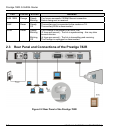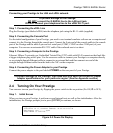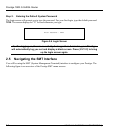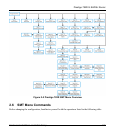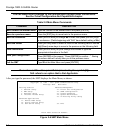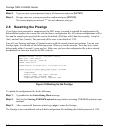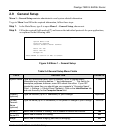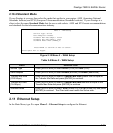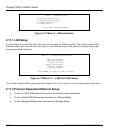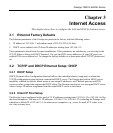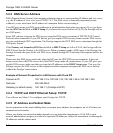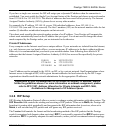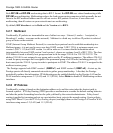
Prestige 782R G.SHDSL Router
2-10 Hardware Installation and Initial Setup
2.9.1 Note on Bridging
When bridging is enabled, your Prestige forwards any packet that it does not route. Without bridging, the
packets are simply discarded. Bridging generates far more traffic than routing for the same network
protocol and consumes more CPU cycles and memory.
The Prestige can also serve as a LAN router. To do this, in Menu 4 choose
Encapsulation = ENET ENCAP, with the Single User Account enabled (default).
Because there is only one IP address it will be assumed that there is only one
computer on the xDSL line.
2.10 Setting Up the WAN Link
Use Menu 2 – WAN Setup to configure G.SHDSL settings for your WAN line. Different telephone
companies deploy different types of G.SHDSL service. If you are unsure of any of this information, please
check with your telephone company.
2.10.1 Service Type
Is your Prestige acting as a Server or Client?
1. The Prestige is a server if it is acting as a COE (Central Office Equipment).
2. The Prestige is a client if it is acting as a CPE (Customer Premise Equipment).
2.10.2 Rate Adaption
Both the Prestige and the peer must have the same transmission rate. Rate Adaption allows the Prestige to
auto-detect the peer Transfer Rate (this feature may not be available on all models).
2.10.3 Transfer Rates
The Prestige supports the following symmetrical multi-rate data transmission speeds:
144, 200, 208, 272, 392, 400, 528, 776, 784, 1040, 1168, 1552, 2064 and 2320Kbps.
You can increase the capacity of the Internet connection (within certain limitations) without changing your
ISP or buying new equipment.
For back-to-back applications make sure that your Prestige and its peer have the same Transfer Max Rate
and the same Transfer Min Rate. Two (maximum and minimum) transfer rates are used to accommodate
fluctuations in line speed. This is known as Dynamic Bandwidth Allocation.



